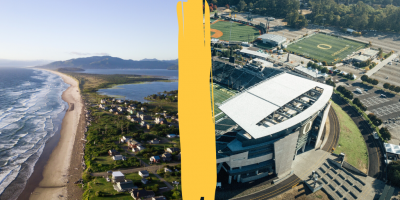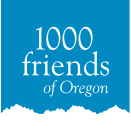Oregonians have a problem. Our problem is COVID-19, and one of the solutions is social distancing. On paper, it may seem that staying at least 6 feet apart from others (that don't live in your household) at all times is easy — after all, it's just six feet. But the more time we spend trying to keep apart, the clearer it becomes that our lives are designed around being together.
Shared public spaces where we spend a lot of our time all make it easier to catch and spread illnesses — which is why statewide, places of gathering and interaction are closed or taking measures to keep people safe: schools, restaurants, offices, and gyms for example. Even sidewalks can make social distancing nearly impossible since many are only 5 feet (or less) wide.
Different places, same problems
Because of the difficulty that comes with applying social distancing to daily life, It's easy to place the blame squarely on large urban centers as the vector for Coronavirus. After all, more people means more chances for infection, in theory. Having this mindest draws attention and conversation away from areas that need it just as much; rural and small communities. Collective risk is heightened if the narrative creates the mistaken belief that somewhere is safe due to its size. The places where it's easy for illnesses to spread are the places that every community has, no matter the population.
It is true that communities with a substantial population and footprint — like Portland, Eugene, Salem or Bend — may have more opportunities where contact with others is unavoidable: public transportation, stadiums filled to the brim and bustling college campuses to name a few. But, with orders from Governor Kate Brown to stay home to save lives, much of the factors that allow for the virus to spread are eliminated.
Our current routine of hunkering down at home with a brief outing for groceries or other essential business is a shared experience, from the largest community to the smallest one.
As a recent New York Times article detailed, even Oregonians in some of the most rural communities are experiencing the nagging feeling in the back of their minds to stay away from others. In fact, rural communities often have fewer places where people regularly gather, and so the opportunity for a virus to spread and the impact of physical distancing are felt even more: the local school where the community gathers for every event; the tavern where sports are watched; the local place of worship.
In Madras, which has a population of a little under 8,000, "Mr. Casad stands six feet away from the other customers at the feed store. Ms. Havstad Casad misses hosting barbecues and going out to listen to music. And they are thinking about redirecting some of their sales to local grocery stores and organic distributors in case restaurants are slow to recover.
Density ≠ crowding
Pointing to duplexes, triplexes, quadplexes or even large apartment buildings as a culprit for virulence isn't valid either, as urban design has made incredible advances since the last major pandemic.
Urban density is not crowding, and density is not a bad word. Urban density stated simply "is the number of people living in a particular urban area and is an important aspect of how cities function."
Crowding — especially in an urban context — refers to situations where too many people in a given area create health, safety, sanitation and other adverse hazards. In the past, improper sanitation through poor — or no — city planning, no knowledge of germ theory, actual overcrowding and a limited understanding of science aided the spread of disease.
Every single one of Oregon's communities has solved the problems of the past that made it so easy for disease to spread: water and sewer infrastructure, health and sanitation requirements at an administrative level and the solving of the bygone problems of overcrowding.
The risk for infection where we live is affected by a laundry list of factors. For example, local policy and the reaction from public officials are large factors in the health outcomes of a community.

What's Next?
Many public health crises fly under the radar because they don't affect everyone — but pandemics like COVID-19 expose the cracks in how our built environments and public policies are flawed.
1000 Friends has fought urban sprawl from our beginnings nearly 50 years ago to protect Oregon's working lands and natural environment while promoting liveable communities. The consequences of urban sprawl are complicated and still being realized: like the inevitable deforestation that follows, which research suggests may lead to a rise in the spreading of disease.
Over time, our communities inevitably change whether it be through population change, economic shifts, or as the result of a history-defining event. While the forces of change are sometimes outside of the control of communities, we can shape change.
How and where we build is just as important as deciding where not to build. Striking the balance of livable, equitable and thriving communities inside urban growth boundaries while preserving beautiful natural areas and productive working lands outside urban growth boundaries will be more critical in our post-COVID-19 world than ever.
